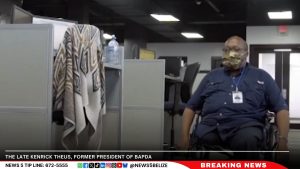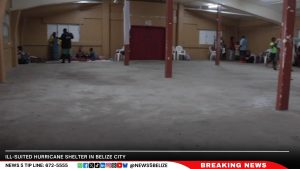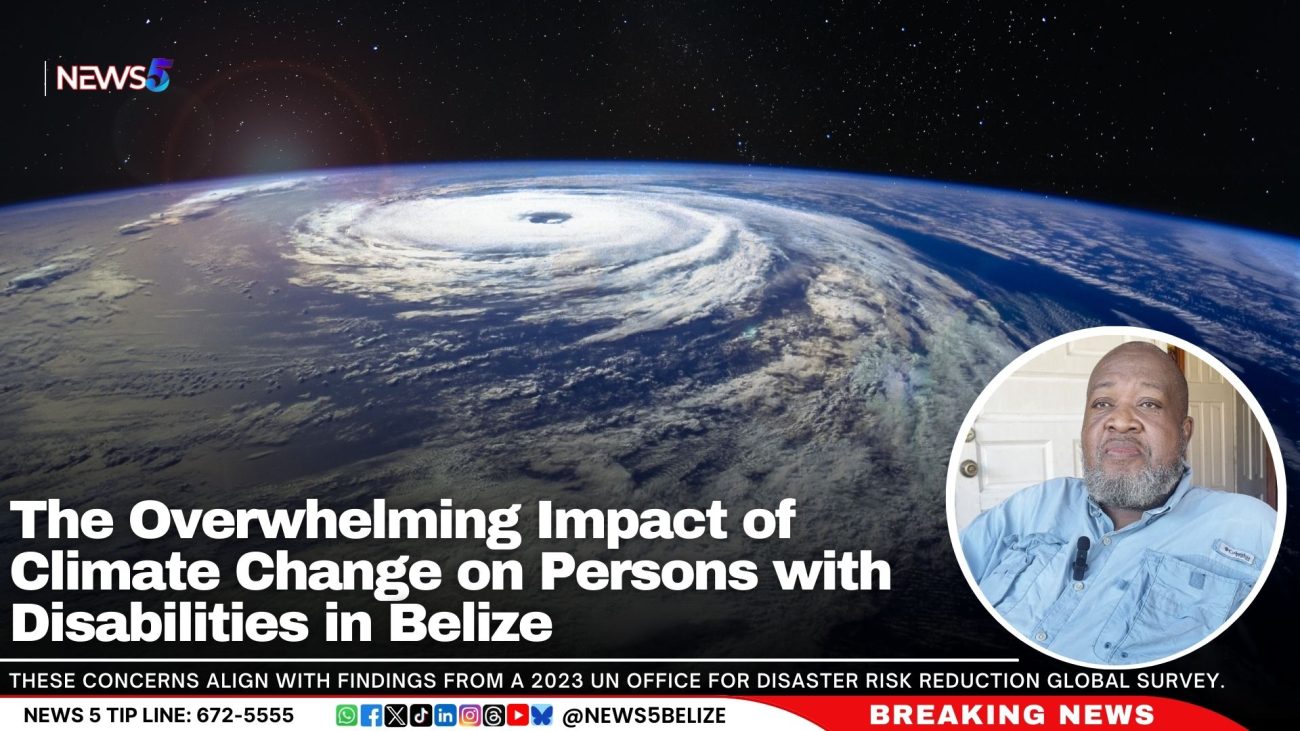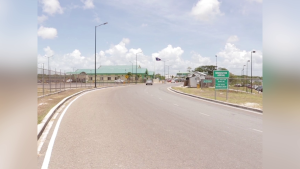The Overwhelming Impact of Climate Change on Persons with Disabilities in Belize
Climate change drives more frequent and severe weather events, such as hurricanes, flooding, droughts, and erosion. It is no secret that these events disproportionately affect people with disabilities, who are up to four times more likely to die in a disaster. So why is it that people with disabilities often feel forgotten by their governments?
Kenrich Theus was one of them. Unfortunately, he died a week after I spoke with him at his home in Belize City. He was the president of the Belize Assembly for People with Diverse Abilities (BAPDA). And during my interview with Thues, he expressed frustration at the government’s delayed response to an already severe situation with respect to vulnerable populations. He said, “To remember someone means that you attribute, in government, that you attribute a part of your budget to deal with the things that affect those people. Sad to say, as a line item, disability probably stands last on the list.”
According to the United Nations Office for Disaster Risk Reduction (UNDRR), a critical gap exists in disaster preparedness, with only 25% of persons with disabilities able to follow evacuation instructions. Just 11% are aware of a disaster management plan in their community. This is extremely alarming, especially since we have seen intensified effects of climate change.

Theus says that accessible information and evacuation plans are vital to reduce vulnerability, as many individuals lack sufficient warning of impending disasters or face inaccessible procedures. “We have a WhatsApp group where I post updates. One or two persons might call because of their unique situation. They prefer to call us, and we make contact with authorities to have them evacuated. But there isn’t like a strategic plan to evacuate this vulnerable population.”
As climate change accelerates, Belize faces a rapid succession of extreme weather events, leaving vulnerable populations with little time to recover before the next disaster strikes. For individuals with disabilities, this creates an even more precarious situation as it exacerbates existing challenges and introduces new layers of hardship. “There’s been a rapid succession of storms. So you barely have time to bounce back from the first one. So with this rapid succession, it means then that whatever plan that you do or lack of planning you do have will suffer,” Theus added.
He said, “Displacement also occurs as well, where people are displaced, and that makes their situation even worse off for someone who’s severely disabled. For those who are disabled to the point where they are still helpful to themselves, they might be better able to fend for themselves.”
UNDRR data indicates that persons with disabilities face heightened risks, including violence, exploitation, and abuse in emergency shelters. Young women with disabilities are particularly vulnerable to gender-based violence. Displacement also presents barriers to accessing humanitarian aid, with 75% of persons with disabilities reporting exclusion from aid efforts, according to UNDRR data.
Shelters in Belize are ill-suited to accommodate persons with disabilities. Only two shelters in Belize City are considered accessible. Two out of the four hundred structures across the country that have been designated as shelters. Displacement often leads to the loss of essential items like wheelchairs, glasses, or medications, further jeopardising safety and health. Limited access to necessities such as water, food, and healthcare exacerbates these challenges. Essentials are crucial, says Evan Cowo, the community-based rehabilitation manager at the Inspiration Center. He also sits on the Special Needs Disaster Response Team for Belize City. “You can’t bring somebody who has a disability and just let them sit on the floor; you know, you need beds, and some of these people that come, sometimes they have bedsores, and you have other complications that they, you know, they really need to be in a bed.”

According to Theus, displacement can lead to heightened anxiety and stress, especially when individuals are separated from assistive devices, caregivers, or familiar surroundings. For those severely disabled, such disruptions can significantly impact their mental and physical health. Theus stressed that climate change also compounds economic vulnerabilities. Many individuals with disabilities already face limited income opportunities, and the destruction of homes, assistive devices, or small businesses due to flooding can push families further into poverty. Repeated storms leave little time for recovery, making it harder to rebuild and regain stability. He stressed that this cycle of loss and recovery is especially brutal for families with limited resources, as they often have to choose between immediate survival needs and long-term solutions like rebuilding a secure home.
Security is another significant concern. During evacuation, homes are left unattended, leaving them vulnerable to theft. Theus says that perpetrators often target properties they assume are unguarded. “It’s an additional mental stress on that person and their family members if they have to leave your house for a long time, because you know that sometimes in these cases, when the storms are brewing, that’s when robbers are out as well. And it’s not like they won’t pick the house of a disabled person. They are not selective,” said Theus.
These concerns align with findings from a 2023 UN Office for Disaster Risk Reduction global survey. Only 8% of persons with disabilities reported that local disaster risk reduction plans accounted for their specific needs, while 86% said they had not been involved in community-level disaster decision-making or planning.
Addressing these issues requires a dual approach: investments in physical infrastructure, such as accessible evacuation routes, and reforms to communication systems to ensure disability-inclusive emergency services.







Facebook Comments